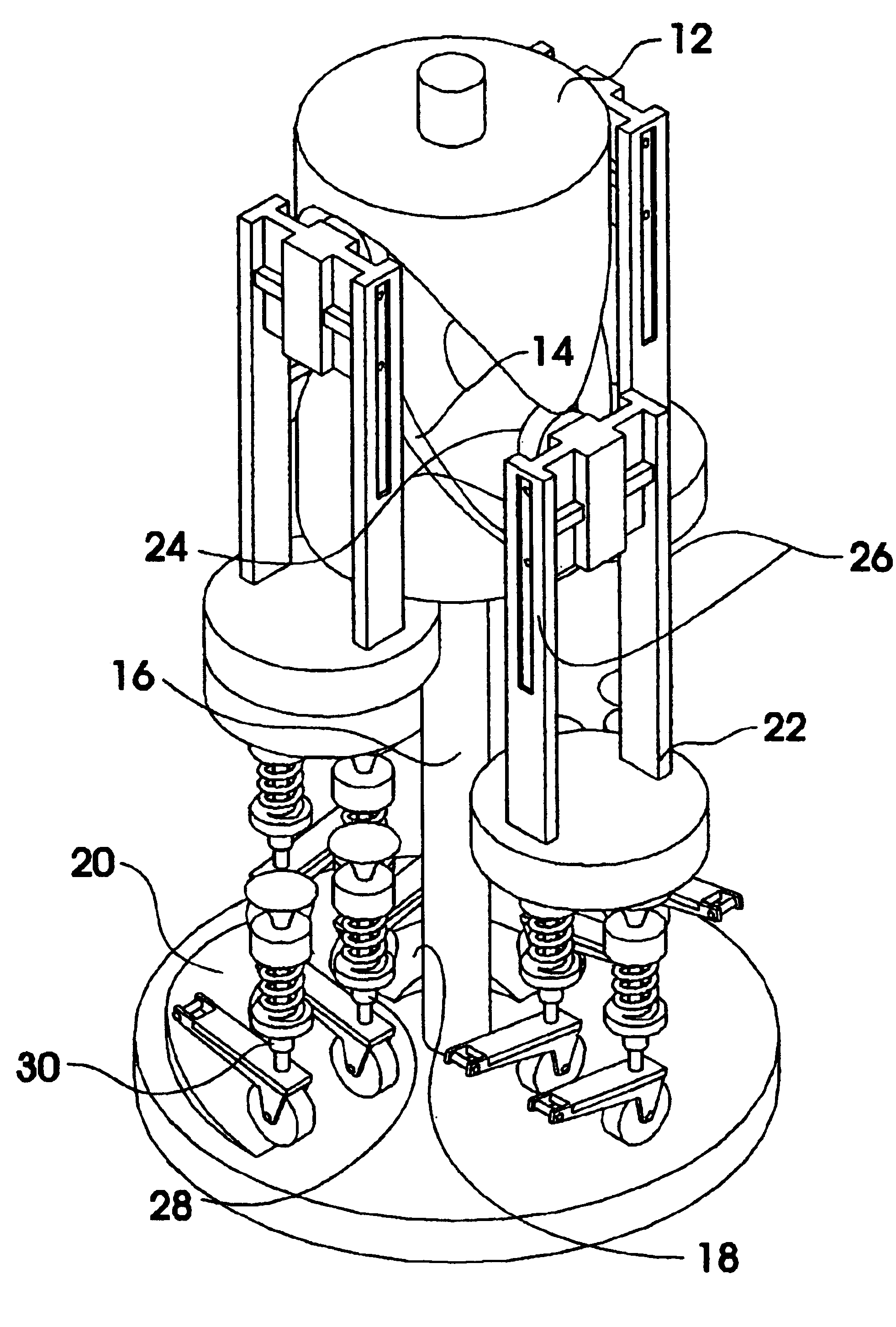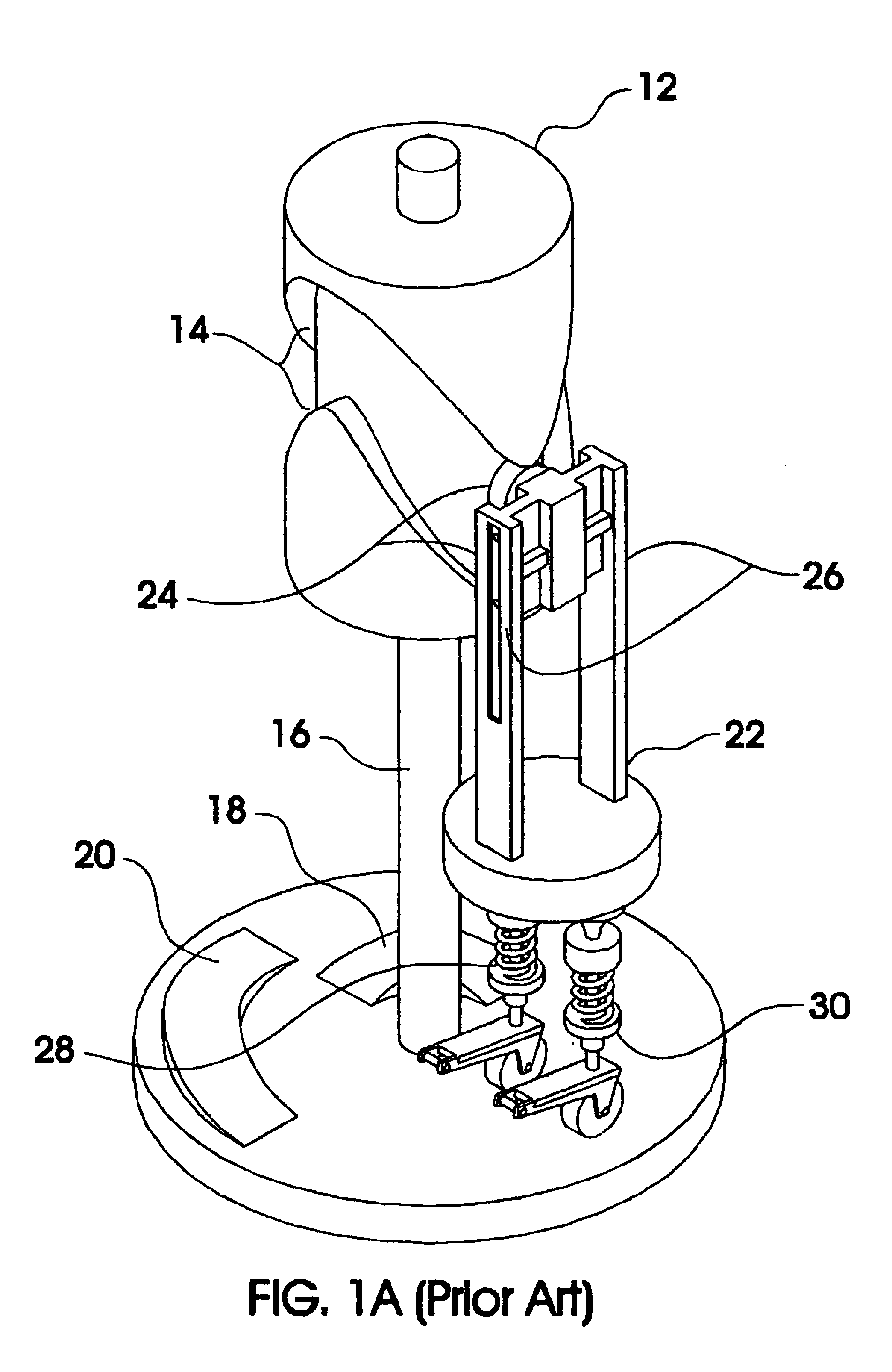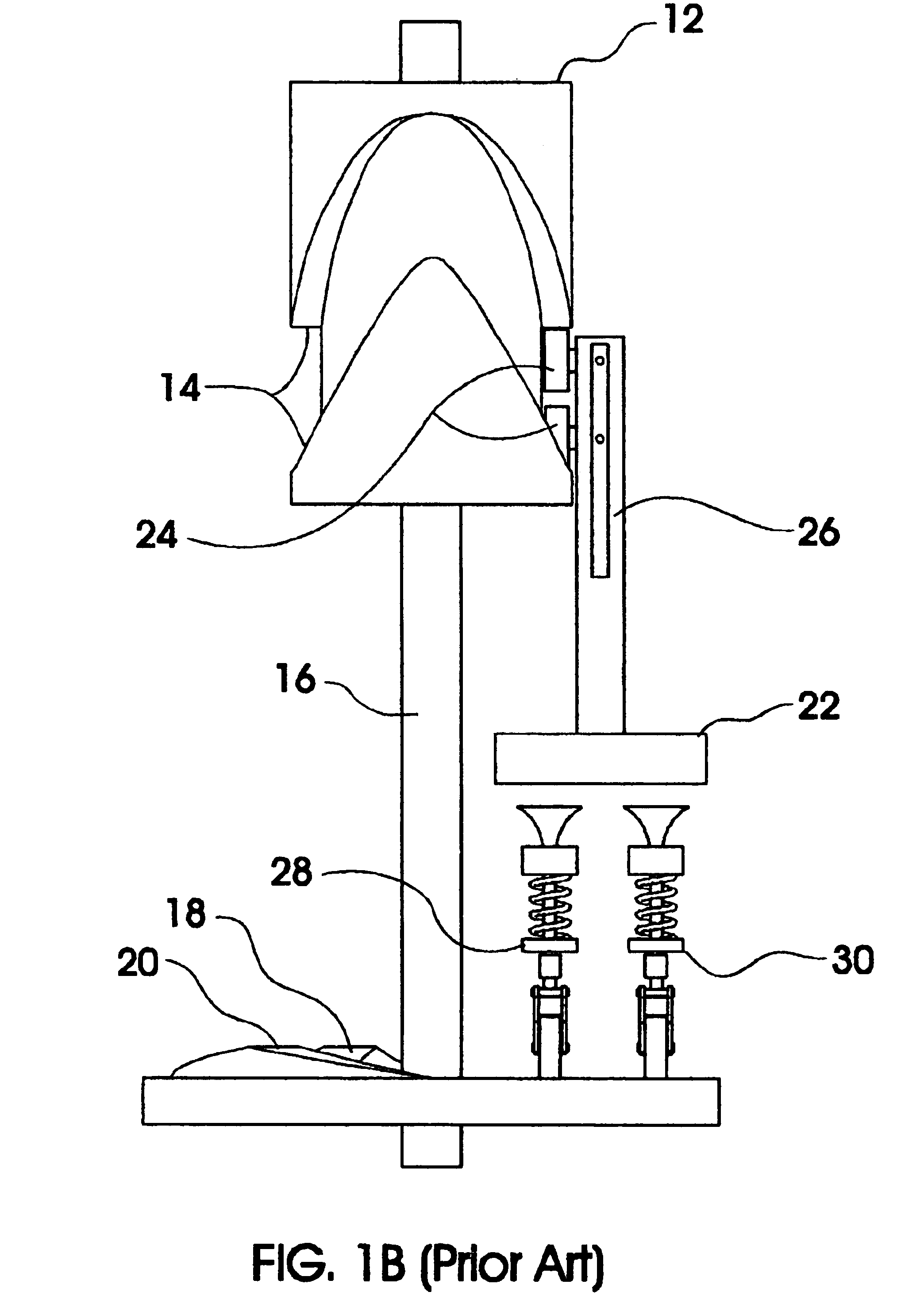Balanced barrel-cam internal-combustion engine
a barrel-cam and internal combustion technology, applied in the direction of machines/engines, reciprocating piston engines, positive displacement engines, etc., can solve the problems of engine space occupation, noise imbalance, and inability to meet the needs of applications, and achieve the effect of reducing noise and vibrational harshness
- Summary
- Abstract
- Description
- Claims
- Application Information
AI Technical Summary
Problems solved by technology
Method used
Image
Examples
embodiment
FIG. 8--Operational Embodiment
FIG. 8 shows an isometric view of an operational piston-assembly arrangement made possible by FIG. 6 or FIG. 7 for a completely balanced, 4 cylinder, 2 reciprocation per revolution barrel-cam engine. Part motions are analagous to those of FIGS. 1A and 1B.
Advantages
From the description above, a member of advantages of the present invention become evident. Specifically, the present invention offers more diverse and compact choices of barrel-cam engine configurations with the following benefits:
(a) The present invention makes naturally balanced operation possible with only a single barrel-cam and single-ended piston-assemblies (standard pistons) which was not always possible in prior art. With naturally balanced operation, there is no need for balance shafts. This results in a reduction in engine part numbers and size.
(b) The present invention ensures naturally balanced operation for a class of barrel-cam piston-assembly displacement profiles that is more ...
PUM
 Login to View More
Login to View More Abstract
Description
Claims
Application Information
 Login to View More
Login to View More - R&D
- Intellectual Property
- Life Sciences
- Materials
- Tech Scout
- Unparalleled Data Quality
- Higher Quality Content
- 60% Fewer Hallucinations
Browse by: Latest US Patents, China's latest patents, Technical Efficacy Thesaurus, Application Domain, Technology Topic, Popular Technical Reports.
© 2025 PatSnap. All rights reserved.Legal|Privacy policy|Modern Slavery Act Transparency Statement|Sitemap|About US| Contact US: help@patsnap.com



